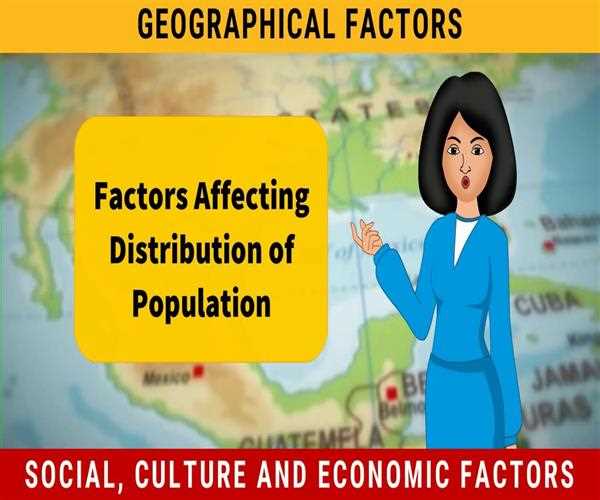The distribution of population around the world is not uniform. There are some areas that are very densely populated, while others are very sparsely populated. There are a number of factors that influence population distribution, including:

Physical factors: These include climate, terrain, soil, and natural resources. For example, areas with a mild climate and fertile soil tend to have higher population densities than areas with a harsh climate and poor soil.
Economic factors: These include employment opportunities, wages, and the cost of living. Areas with a strong economy and good job opportunities tend to have higher population densities than areas with a weak economy and few job opportunities.
Social factors: These include culture, religion, and family ties. For example, areas with a strong cultural identity or religious significance may attract people from all over the world.
Political factors: These include stability, security, and access to basic services. Areas with a stable political environment and good access to healthcare, education, and other essential services tend to have higher population densities than areas with a volatile political environment and poor access to basic services.
The relative importance of these factors varies from place to place. For example, in some areas, physical factors such as climate and terrain are the most important determinants of population distribution. In other areas, economic factors such as employment opportunities and wages are more important. And in still other areas, social and political factors are the most important determinants of population distribution.
The distribution of the population around the world is constantly changing. This is due to a number of factors, including:
Natural disasters: Natural disasters such as floods, earthquakes, and tsunamis can displace people and lead to changes in population distribution.
War and conflict: War and conflict can also displace people and lead to changes in population distribution.
Economic development: Economic development can lead to changes in population distribution, as people move to areas with new job opportunities.
Climate change: Climate change is expected to have a significant impact on population distribution, as people are forced to move to areas that are less affected by climate change.
The distribution of population around the world is a complex issue that is influenced by a number of factors. These factors are constantly changing, which means that the distribution of population is also constantly changing. It is important to understand the factors that influence population distribution in order to make informed decisions about how to manage population growth and development.